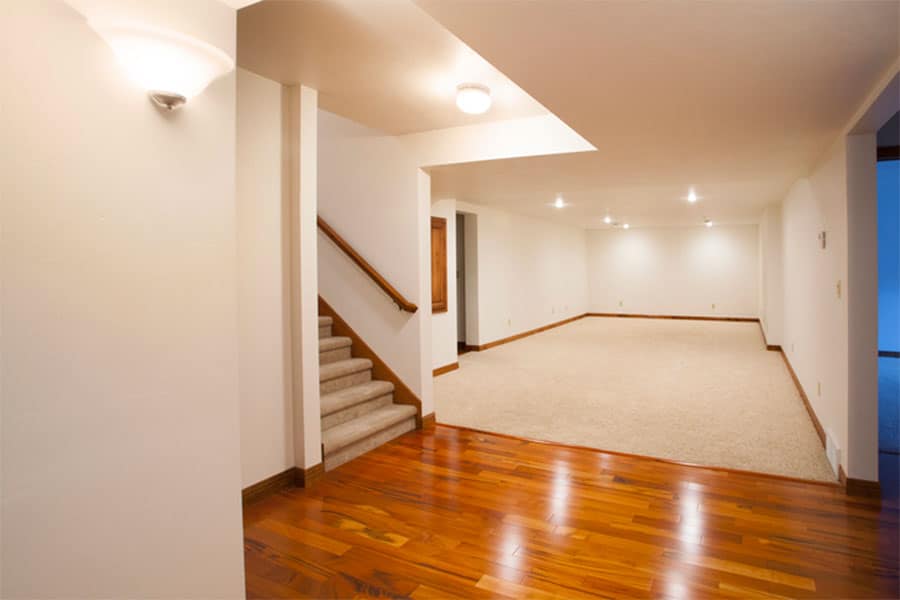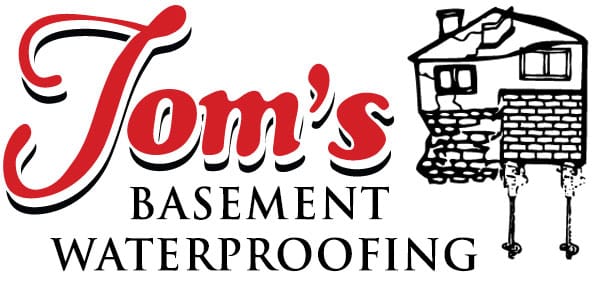
Waterproofing your basement can be an exhausting yet essential process. There are innumerable ways, tips, and vendors to choose from, which cast a fog of confusion and will likely become overwhelming. Here at Tom’s Basement Waterproofing, we aim to clear up some of the obscurity and provide three simple basement waterproofing methods and the best tips for making the most out of each.
1: Interior Water Drainage, What Can Be Done Inside
A wet basement can limit the usable space of your home, slowly destroy foundations, and allow the growth of dangerous molds. First and foremost, in the fight against dampness, interior water control systems are your first line of defense. These types of drains are the most effective dewatering method. Although, installing interior water draining can be very expensive, depending upon the layout of your basement. So, what type of drainage system should you purchase, and what options are available?
- French Drain: The most common type of drainage system uses perforated pipes to remove the water before it reaches your basement and then redirects the moisture into an exterior drainage field. Although French Drains can have a few drawbacks, primarily due to clogging, installation expense, and maintenance; meaning the best option comes at a cost.
- Sump Pump: Submersible pumps are an excellent solution for homes that experience periodic or seasonal flooding. Sump pumps work by pumping water out of the pit of your basement and into an exterior drainage field. However, a sump pump treats the symptoms and not the cause of flooding.
2. Interior Sealant Injections, The Temporary Fix
The band-aid fix for waterproofing your basement, interior sealant injections can be hit or miss with their efficiency. Sealants can protect your home from further damage and are significantly cheaper than permanent waterproofing methods. While it is essential to stop cracks before they get worse, allocate funds and research to solving your water problem, not just temporarily fixing it.
3. Exterior Waterproofing, The Primary Method
Exterior waterproofing is the most comprehensive and potent form of basement waterproofing, although waterproofing the exterior of your basement is a very involved and invasive process. For this method, you must hire a professional team to excavate the surface around your home and install several layers of polymers and protective membranes around your foundation to provide a functional seal. This process is most commonly done during construction and increases in difficulty in older homes. Types of exterior waterproofing include:
- Exterior Drain Tiles: Tiles are installed outside and connected to perforated piping. Exterior drain tiles work similarly to French Drains. However, installation of such tiles is messy and will require excavation all around your home.
- Gutters: If you don’t have exterior gutters, get them as soon as possible. Gutters redirect water down and away from your home, draining it into surrounding soil, drain, or other water sources. Always ensure your gutters are clean and well-maintained.
How To Get Your Basement Waterproofed And Who Should You Call
Waterproofing your basement is an essential long-term solution to keeping your home safe. It helps increase home value, and the sooner you ensure your home is protected, the better you’ll feel. Finally, it will give you peace of mind, knowing that even as the rains fall, you are protected and won’t wake up to a flooded basement and destroyed belongings.
For all your basement waterproofing needs, give us a call at Tom’s Basement Waterproofing. We have over 45 years of experience and are here to provide the best basement waterproofing services. To learn more about basement waterproofing methods, call us today at (586) 949-7826.
